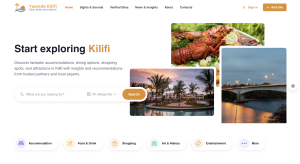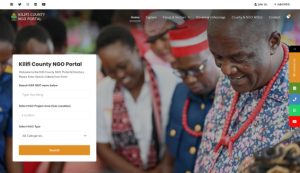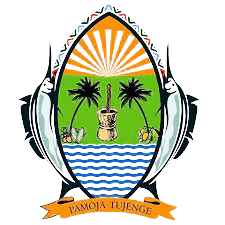Karibu katika Idara ya Elimu na Teknolojia ya Habari na Mawasiliano

The Kilifi County Department of Education, led by Hon. Felkin K. Dena, the County Executive Committee Member for Education & ICT, is dedicated to fostering educational excellence and inclusivity across the county. Hon. Dena, brings a wealth of experience and a deep understanding of local educational needs.
Supporting him is Mr. Fredrick Nguma, the Chief Officer for Education, who oversees the implementation of educational programs and policies aimed at improving learning outcomes. Together, they have driven significant achievements in educational reforms, vocational training development, and community engagement. Their efforts have led to successful partnerships with international organizations, enhancing educational resources and opportunities for Kilifi County residents.
Looking ahead, the department aims to continue empowering youth, enhancing digital literacy, and improving educational infrastructure. Collaborations, such as the recent MOU with Jiangxi Province and Jiujang City in China, highlight the department’s focus on maximizing resources in culture, education, trade, tourism, and agriculture, aiming for a prosperous future for Kilifi County.
- Department Vision And Mission
- Partnerships and Collaborations
- Reports and Publications
- Department Statistics
VISION
To be a leading, vibrant, highly productive, secure and prosperous county providing a high quality of life for all its inhabitants.
MISSION
The county will provide the environment for efficient utilization of resources, effective provision of essential services, and industrial growth and development initiatives for improved quality of life for all.
CORE VALUES
- Honesty, Integrity and prudent use of pub lic resources Team work and appreciation for diversity Environmental Sustainability
- Good Governance, Transparency and accountability
- Equity, inclusive people-driven leadership
- Use of ICT and Innovation
- Hardworking
- Harmonious & Peaceful coexistence
1. Public-Private Partnerships (PPPs)
- Educational Infrastructure Development: The Department of Education and ICT in Kilifi County can engage with private investors to build and upgrade educational infrastructure, such as classrooms, libraries, and ICT centers. This collaboration helps in addressing the infrastructural gaps in schools and vocational training centers.
- ICT Integration in Schools: Partnering with tech companies to provide digital learning tools, computers, and software can enhance the learning experience. These collaborations can also include training teachers to effectively use ICT tools in their teaching methodologies.
2. International Collaborations
- Exchange Programs and Scholarships: Establishing ties with international educational institutions and governments can lead to the creation of exchange programs for students and educators. These programs enhance the quality of education by exposing participants to global best practices.
- Funding and Grants: Collaborations with international organizations like UNICEF, UNESCO, and the World Bank can provide funding for educational initiatives, particularly those aimed at improving access to education for marginalized communities.
3. Partnerships with NGOs and CBOs
- Community Outreach Programs: Non-Governmental Organizations (NGOs) and Community-Based Organizations (CBOs) can play a significant role in promoting education at the grassroots level. Partnerships with these organizations can help in running literacy programs, providing educational materials, and supporting vulnerable children.
- ICT Training for Youth: Collaborating with NGOs focused on digital literacy can facilitate the establishment of ICT training centers. These centers can equip the youth with essential digital skills, enhancing their employability in the modern job market.
4. Collaboration with Higher Education Institutions
- Research and Innovation: Partnering with universities and colleges can foster a culture of research and innovation. Such collaborations can lead to the development of educational content tailored to local needs and the introduction of new teaching methods.
- Teacher Training Programs: Collaborating with teacher training institutions ensures that educators are well-equipped with modern pedagogical skills and knowledge. These partnerships can also offer continuous professional development for teachers.
5. Corporate Social Responsibility (CSR) Initiatives
- Educational Sponsorships: Corporations can collaborate with the Department of Education and ICT to sponsor students from low-income families. This can include scholarships, provision of school uniforms, and learning materials.
- ICT Equipment Donations: Companies can donate ICT equipment such as computers, tablets, and projectors to schools, helping bridge the digital divide and enabling students to access digital learning resources.
6. Government Partnerships
- Inter-County Collaborations: Partnering with other counties can facilitate the sharing of resources and best practices in education and ICT. This can include joint teacher training sessions, curriculum development, and ICT infrastructure projects.
- National Government Support: Collaborations with national government bodies like the Ministry of Education and the Ministry of ICT can lead to the implementation of national education policies and ICT initiatives at the county level. This can also include access to funding and technical support for county-specific educational programs.
7. Industry-Academia Partnerships
- Skill Development Programs: Partnering with industries can lead to the creation of vocational training programs aligned with the needs of the local job market. These collaborations can also include internships and apprenticeship opportunities for students.
- Curriculum Development: Collaborating with industry experts can ensure that the curriculum in vocational training centers is relevant and up-to-date, preparing students for the demands of the workforce.
8. Partnerships with Telecommunication Companies
- Internet Connectivity in Schools: Partnering with telecom companies can help in providing internet connectivity to schools, especially in remote areas. This is crucial for accessing online educational resources and implementing e-learning programs.
- Digital Literacy Campaigns: Telecom companies can also collaborate on digital literacy campaigns, teaching students and teachers how to use online platforms and digital tools effectively.
Partnerships and collaborations are essential for the Department of Education and ICT in Kilifi County to achieve its goals of providing quality education and enhancing digital literacy. By leveraging the strengths and resources of various stakeholders, the department can address challenges, improve educational outcomes, and ensure that the residents of Kilifi County are well-prepared for the future.
Schools and Classes
- Total Primary Schools: 500
- Total Secondary Schools: 120
- Average Number of Classes per Primary School: 8
- Average Number of Classes per Secondary School: 10
Teachers
- Total Number of Primary School Teachers: 4,000
- Total Number of Secondary School Teachers: 1,500
- Pupil-to-Teacher Ratio in Primary Schools: 40:1
- Student-to-Teacher Ratio in Secondary Schools: 30:1
Students
- Total Number of Primary School Students: 160,000
- Total Number of Secondary School Students: 45,000
- Average Class Size in Primary Schools: 40 students
- Average Class Size in Secondary Schools: 35 students
Facilities
- Percentage of Schools with Electricity: 85%
- Percentage of Schools with Internet Access: 50%
- Number of Schools with Science Laboratories: 100 (Secondary Schools)
- Number of Schools with Libraries: 300 (Primary and Secondary Schools)
ICT Integration
- Schools with Computer Labs: 70 (Secondary Schools)
- Schools Implementing Digital Learning Programs: 200 (Primary Schools)








